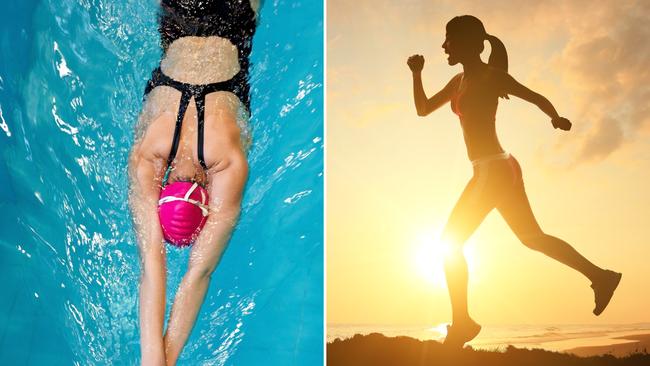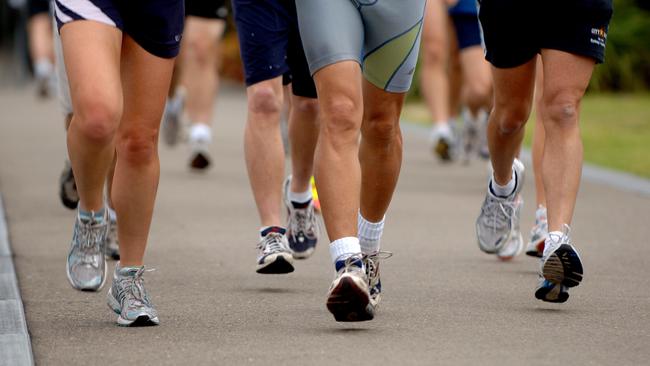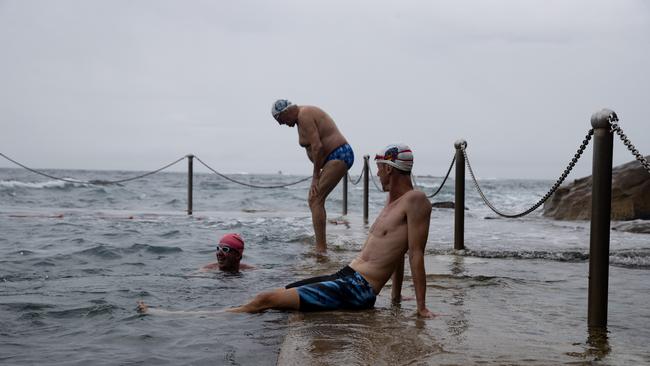Swimming vs. running: Choosing the better exercise for your body
Do you take your fitness journey by land or by sea? Your go-to choice depends on training, injury history and more.

Do you take your fitness journey by land or by sea?
Anyone picking a new exercise routine won’t lack for opinions from among the tens of millions of runners and swimmers in the U.S. There are passionate communities on both sides that will tell you their sport is superior.
Better to ask someone who does both.
“I tolerate swimming to be able to do sports we like, to travel to cool places and race together,” says Jacob Gilden, a 36-year-old competitive triathlete and swimrunner. “But if I was less injury-prone, I would probably be doing a lot less swimming and a lot more running.” His wife, Liz Gilden, a former professional triathlete herself, also loves running, but the 36-year-old says that age has changed the equation. Swimming isn’t as hard on the body, she says: “We can’t really run as much as we used to. So supplementing swimming really helps preserve that aerobic capacity.” We all know the basics: Both running and swimming can boost your cardiovascular and mental health. Doing either is generally better than doing nothing.
How to decide which is better for you? We talked to experts to determine the factors -- including your training, injury history and natural affinity -- that play into the decision.
Born to run
Contrary to popular belief, running doesn’t have to destroy your knees and can actually benefit them. Some exercise scientists and researchers say that, with the proper routines, people can continue running into their 60s and 70s -- or maybe even later.
Careful and informed training for a marathon can have a protective effect on knee joints of sedentary people without prior knee pain or issues, according to a pair of published studies from 2019 in the BMJ and 2020 in Skeletal Radiology.
Using magnetic resonance imaging, or MRI, researchers analyzed the knee joints of dozens of middle-aged, first-time marathoners. Many people assume that joints, bones and muscles wear down over time like car parts, says Alister Hart, a professor of orthopedics at University College London and the chief investigator of the studies.
But our body parts are biological, he says. “By doing exercise, they actually repair, renew and improve.” Because running is a load-bearing exercise, research suggests it can build bone health. “We know that bones respond to force,” Hart says. “Running improves your knees by improving the quality of the bone on either side of the knee joint.” But runners shouldn’t do anything too vigorous or bear too much weight until their bodies are able to manage. Instead, they should start out with easy runs and gradually increase the intensity and mileage.

“We don’t want someone who’s not conditioned to run to jump into running, ” says Laura Richardson, a clinical associate professor of applied exercise science and movement science at the University of Michigan.
That includes people with arthritis and joint pain or those who are recovering from an injury or surgery. They may want to opt for swimming instead of running, researchers say.
“If you had a soccer injury at a young age, and you ruptured your cruciate ligament, and you never had it repaired, you’re going to be running on a joint that’s going to be not moving normally,” Hart says. “Your risk of developing joint damage is real.”
High-water marks
Proponents of swimming point to the fact that it activates muscles throughout your body, while running mainly works the lower body.
And because moving through water can be less harsh on the body than pounding pavement, swimming is often useful for rehabbing from injuries -- including overtraining in running -- and for those seeking joint-friendly exercise, says Scott Trappe, the director of the Human Performance Laboratory at Ball State University. Regular swimming has been found to reduce joint pain and stiffness associated with osteoarthritis.
Other health benefits have gotten less attention.
Researchers found that masters athletes, including swimmers, cyclists and triathletes -- with the average age of 57 -- had more satisfying sex lives and better sexual function than the general population. The study’s subjects mostly consisted of swimmers but a small percentage of participants took part in other activities such as running and rowing.

“The take-home message is that swimming can enhance sexual function to an older age,” says Hirofumi Tanaka, the director of the Cardiovascular Aging Research Laboratory at the University of Texas at Austin and senior author of the 2023 study, which was published in the International Journal of Sexual Health.
One potential downside of swimming, exercise scientists say, is that it might require more training to get the benefits.
“You have to have a good skill to raise your heart rate up,” Tanaka says.
‘Intrinsic excitement’
Running and swimming can both be physically demanding and even risky, so experts recommend easing into both.
The trick is determining what intensity of an aerobic activity you can maintain in a continuing program, says the University of Michigan’s Richardson. “It’s a matter of finding that sweet spot.” And when it comes to picking one or the other, the best choice is probably the one that you’ll stick with consistently. “If putting on your shoes and running outside seems like a challenge, then maybe you need to pack your bag and go to a local pool,” Richardson says . “So whatever feels like you have a little intrinsic excitement about doing, that’s the one you’ve got to do.”
The Wall Street Journal







To join the conversation, please log in. Don't have an account? Register
Join the conversation, you are commenting as Logout